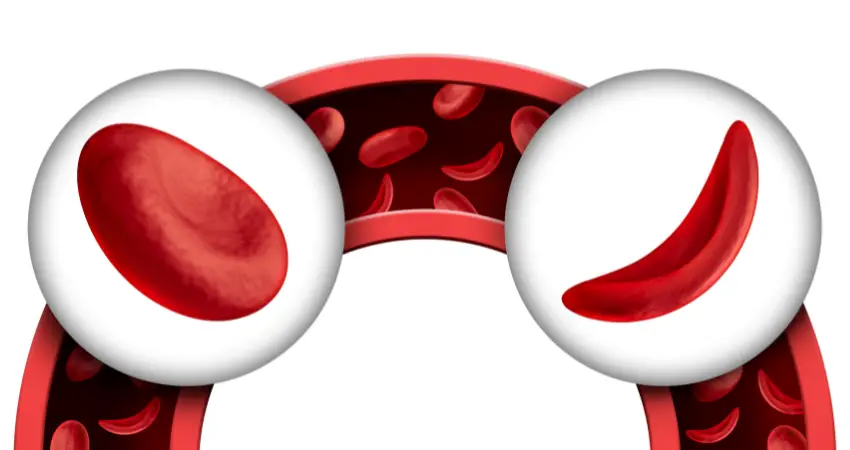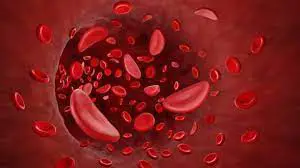Sickle cell anemia is a genetic blood disorder that affects millions of people worldwide.
It is a type of sickle cell disease (SCD) that is caused by a mutation in the HBB gene that encodes for hemoglobin, a protein found in red blood cells that carries oxygen throughout the body.
The mutation results in the production of abnormal hemoglobin molecules that cause red blood cells to become stiff and sickle-shaped, leading to a variety of symptoms, including chronic pain.

Sickle Cell Treatment and Pain Management
Pain is the most common symptom of sickle cell anemia, and it is often the primary reason why people with the condition seek medical care.
Pain in sickle cell anemia can be acute, meaning it comes on suddenly and lasts for a short period, or chronic, meaning it is persistent and lasts for months or even years.
Acute pain is usually caused by sickle cell crises, which occur when sickle-shaped red blood cells block small blood vessels, leading to tissue damage and inflammation.
Chronic pain, on the other hand, is often caused by ongoing inflammation and tissue damage in the body.

As a nurse, I have taken care of many patients with sickle cell anemia. It is a painful disease. Often time, these patients have a reputation of being “drug addicts”.
They are not drug addicts. These people have had pain all of their lives. Therefore, they have built up a tolerance to pain meds.
Many health professionals don’t understand this, and they think the patients are “drug” seeking. I try and educate healthcare professionals around me that is not the case.
Pain Management Strategies for Sickle Cell Disease
Controlling pain in sickle cell anemia is a major challenge for both patients and healthcare providers.
Traditional pain management strategies, such as opioids and non-steroidal anti-inflammatory drugs (NSAIDs), have limited effectiveness in treating sickle cell pain and can lead to side effects and addiction.
As a result, many patients turn to alternative therapies, such as massage, acupuncture, and mindfulness meditation, to manage their pain.
Medical Cannabis for Sickle Cell Anemia
One promising approach to controlling pain in sickle cell anemia is the use of medical cannabis.
Cannabis has been used for centuries to treat pain and has been shown to have a wide range of medicinal properties, including anti-inflammatory, analgesic, and anti-nausea effects.
In recent years, there has been a growing body of research on the use of cannabis in sickle cell anemia, and many patients report significant pain relief with cannabis use.
One study published in the journal Blood in 2018 found that sickle cell patients who used cannabis had a lower frequency of pain episodes and fewer hospitalizations compared to those who did not use cannabis.
The study also found that cannabis use was associated with a reduction in opioid use and improved quality of life.
Another study published in the Journal of Pain in 2020 found that sickle cell patients who used cannabis had significantly lower pain scores and higher quality of life scores compared to those who did not use cannabis.
Despite the promising results of these studies, the use of medical cannabis in sickle cell anemia remains controversial.
Cannabis is still illegal at the federal level in the United States, and many healthcare providers are hesitant to recommend it due to concerns about side effects, addiction, and the lack of standardized dosing and delivery methods.
In addition, sickle cell patients may face additional barriers to accessing medical cannabis, such as cost and stigma.
Gene Therapy
Another promising approach to controlling pain in sickle cell anemia is the use of gene therapy.
Gene therapy is a type of treatment that involves altering a patient’s DNA to correct or replace a defective gene.
In the case of sickle cell anemia, gene therapy aims to replace the mutated HBB gene with a healthy copy of the gene, which would result in the production of normal hemoglobin molecules and the prevention of a crisis.
In recent years, there have been several breakthroughs in gene therapy for sickle cell anemia. In 2019, the US Food and Drug Administration (FDA) approved the first gene therapy for sickle cell anemia, called Zynteglo.
Zynteglo uses a virus to deliver a healthy copy of the HBB gene to a patient’s bone marrow cells, which then produce normal hemoglobin molecules.
Conclusion
Hopefully, one day, there will be a cure for sickle cell anemia. Gene therapy is offering great promise in this field. Sickle cell patients can also do some lifestyle changes that will reduce crisis.
For example, hydration is extremely important. Avoiding stress is also important.
The majority of patient that I care for with sickle cell anemia have either been sick or under stress.
Sources
https://pubmed.ncbi.nlm.nih.gov/29542687/


